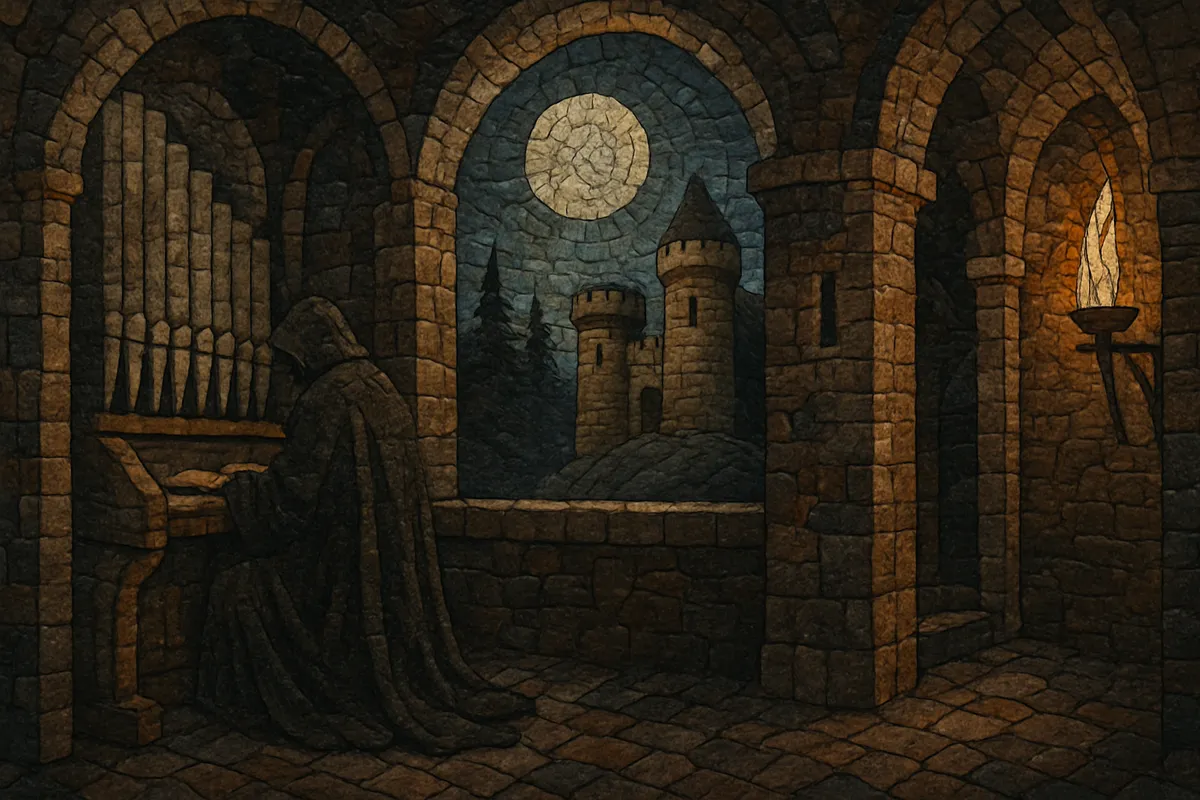Dungeon synth is a dark, fantasy-focused branch of ambient music that grew out of the early 1990s black metal underground. It typically uses inexpensive or vintage-sounding synthesizers to evoke medieval, folkloric, and high-fantasy worlds—dungeons, castles, forests, and forgotten realms—through simple modal melodies, drones, and processional harmonies.
The style is intentionally lo‑fi and atmospheric: orchestral pads, choirs, pipe organs, harps, flutes, and bell tones are layered with tape-like hiss, room reverb, and steady pedal notes. Percussion is sparse or absent; when used, it tends toward martial snare patterns or timpani rolls rather than driving drum kits. Albums often function as worldbuilding artifacts with narrative track sequences, thematic leitmotifs, and evocative artwork.
Dungeon synth emerged within the Northern European black metal milieu as artists began issuing purely synthesizer-based, medieval- and fantasy-themed side projects and interludes. Mortiis (Norway) is widely cited as a foundational figure with his Era I recordings (1993–1996), which defined the lo‑fi, processional, and cinematic qualities of the style. In parallel, projects like Depressive Silence (Germany) and Jim Kirkwood (UK) demonstrated that the sound could stand apart from metal entirely. These early works circulated primarily on cassettes and small labels, codifying an underground tape-trading culture.
Through the late 1990s and 2000s, dungeon synth remained a cult form, maintained by collectors, niche forums, and scattered reissues. Its aesthetics—cheap synth timbres, modal writing, and fantasy worldbuilding—remained consistent, even as many originators shifted focus or retired.
The term “dungeon synth” was popularized online in the early 2010s as Bandcamp, blogs, and Reddit communities (notably r/dungeonsynth) organized archival efforts and new releases. A large wave of artists (e.g., Erang, Sequestered Keep, Old Tower, Thangorodrim, Fief) refreshed the template: some pursued raw, tape-worn “old school” sounds; others favored cleaner, more melodic, or heroic modes. Dedicated labels and festivals (e.g., Northeast Dungeon Siege) helped consolidate a global scene.
The genre diversified into niches such as winter-themed works, comfy/wholesome strains, and hybrids with folk, chiptune, and noise. Its influence reached adjacent microgenres and rap producers, while archival reissues continued to canonize 1990s material. Despite broader visibility, dungeon synth remains resolutely DIY, concept-driven, and album-oriented.


